The most effective potato pest control methods
Potatoes are the most common garden culture, and today it is difficult to imagine any summer cottage without it. However, potatoes are loved not only by gardeners, but also by all kinds of pests, so every gardener should know at least the basic list of dangers that await the harvest, and measures to combat them. Potatoes are threatened by insects, in addition, you can encounter various larvae, caterpillars, and fungal diseases. Let's consider the most important serious threats and determine how the potato pest control is going on.
Content:
- Colorado potato beetle control
- Folk remedies for fighting the Colorado potato beetle
- Fighting wireworm on potatoes
- Fighting caterpillars with scoops on the site
- Fighting a bear in a potato field
- Potato nematode: signs of damage and control
Fighting the Colorado potato beetle
The Colorado potato beetle is a pest that gardeners constantly face. It is a striped insect about 1 cm long and its larvae are bright red or pink in color.
This is an extremely dangerous pest: one pair of beetles can produce offspring that can destroy more than 4 hectares of plantings, adult insects and larvae literally gnaw the entire vegetative part of plants.
They move quickly from one area to another, so one infected area will eventually lead to the defeat of the entire suburban area.
In addition, insects calmly survive the winter, and also know how to hide in the soil from poisons, so a simple etching will not solve the problem.
There are several ways to deal with the Colorado potato beetle:
- The first simple and very effective way is to manually assemble the beetle. One female lays more than 400 eggs, so the destruction of even one insect will at least partially reduce the growth on the site. For humans, the beetle is completely harmless, therefore, apart from some psychological discomfort, nothing threatens you. You can arrange bait for the beetle: in early spring, as soon as the soil thaws, potato scraps are laid out on the site or young sprouts are planted. Within a day, the beetle will come out to feast on fresh food, and it can be collected in jars of water and destroyed. After a real planting, the assembly will have to be carried out daily for systematic destruction. It is necessary to eliminate not only adult beetles, but also discovered larvae.
- Selection of resistant varieties... Some potato varieties are less susceptible to the pest, so you can get by with just one or two dressings. Among them are the varieties Temp, Iskra, Zarevo and some others.
- Chemical processing. If the attack of the beetle has become truly massive, you can begin to fight it with insecticides. Means such as Actellic, Colorado, Novodor, Sumicidin, Marshal and others will allow a complete treatment of the site using sprayers. When processing, you must strictly observe safety requirements: use protective masks and gloves, spray the fields in closed clothing. After processing for several days, it is not recommended to weed the plantings.
Folk remedies for fighting the Colorado potato beetle
Chemicals very often do not give the effect that can be achieved with relatively simple folk remedies tested by many gardeners.
Such recipes are available to everyone, while they do not poison the crop and do not make it dangerous for humans, unlike pesticides:
- For processing, you can use wood ash: the Sami bushes and the soil under them are sprinkled with birch ash, as a result, both adults and larvae die. Gardeners claim that a good result can be obtained after the first treatment session.
- Laundry soap mixed with wood ash. A bar of ordinary laundry soap dissolves in a bucket of water, and two cans of ash are added there. After that, a liter of such a product is diluted with a bucket of water and the plants are sprayed. After 1-2 treatments, the insects will completely disappear from the potato bushes.
- Using calendula... The Colorado potato beetle does not like the smell of calendula, so it is enough to plant it around the field so that the pests do not come close to it. You can also plant several plants between the rows of potatoes in the field.
- Wormwood for the fight against the Colorado potato beetle. It is necessary to collect approximately a third of a bucket of wormwood, pour boiling water over it, insist, and after a few days it will be possible to spray the infected areas of the field with infusion.
- There are other recipes, for example, some gardeners recommend using red pepper to fight. However, not all methods are safe for plants, so care must be taken. The main requirement is that the processing should be comprehensive and regular, only then it will be possible to obtain the desired result.
Fighting wireworm on potatoes
Another common and very dangerous pest is wireworm. It represents the larvae of the click beetle, which literally pierce shoots and tubers. If you do not take action in time, the wireworm will take over the entire field and can destroy up to half of the entire crop.
There are two options for dealing with this pest - chemical and agrotechnical.
Insecticide treatments are not always effective and can damage the plants themselves and poison the crop if overused. Knowledge of agricultural technology it will not allow the larvae to develop, and thus it will be possible to save most of the harvest.
There are several methods:
- Late digging of the soil. The larvae hibernate in the soil after harvesting, so they can be successfully dealt with, it is just good to dig up the soil with the first frost at the end of October. In this case, the larvae will be on the surface and will not survive the cold snap.
- Removal of creeping wheatgrass from the soil. Its rhizomes are the wireworm's favorite treat, and if they are absent, the number of larvae will be significantly reduced.
- Surface loosening in late May or early June. At the same time, wireworm eggs come to the surface, and after exposure to sunlight, they will be unviable. The larvae will not appear on the site and the crop will be saved.
- Alternating potatoes and legumes in the field. Such a crop rotation will avoid the appearance of a wireworm: the larvae will not have time to adapt to the new feed, and the potatoes will remain intact. In addition, the soil will be periodically enriched with nitrogen, and this contributes to an increase in yield.
If agrotechnical technologies for some reason do not suit you, you can use folk remedies for pest control. The wireworm is known to dislike onion, therefore, watering the wells with onion broth before planting will scare away the wireworm. You can also put a handful of onion peels or mustard powder in each hole, which wireworms also hate.
You can fight them with the help of traps. Pits are dug on the site, into which young potato leaves are laid, and after a while the pests can be collected and destroyed. This will prevent re-infestation, as each female is capable of laying several hundred eggs.
Fighting caterpillars with scoops on the site
This is another attack familiar to many gardeners: green moth caterpillars gnaw at the leaves, destroying the vegetative part of the plant. It is necessary to fight all stages of the insect's life: larvae, pupa, adult butterfly. The following methods of control are widespread:
- To avoid the appearance of pest butterflies, it is necessary to get rid of the flowering weeds in the potato field. Butterflies feed on pollen, and in the absence of flowers, they will not appear in the field. In addition, traps are located at a height of 1 m: containers with kvass or molasses. Insects will flock to the sweet smell, after which they can be eliminated.
- To remove pupae and caterpillars, it is necessary to carry out a deep digging of the earth every year in the fall: the larvae will be on the surface and die from the cold air.
To eliminate insects, you can apply chemical treatment: to combat caterpillars with scoops, the preparations "Zolon", "Dursban", "Danadim" and many others are used, it is important to strictly observe the dosage.
You can cultivate the field no more than twice in one season, otherwise the crop itself may suffer.
In addition, it is advisable to alternate plants on the site. The caterpillar of the scoop most often chooses nightshades: eggplants, tomatoes, potatoes, and it is better to periodically plant other crops in their place. It is important to carry out complex processing using several methods, only then you can get the result.
Fighting a bear in a potato field
Medvedka is a common but little-studied pest of a rather frightening look. It is sometimes called "mole cricket" because it is able to move quickly in the ground, while making sounds similar to the singing of a cricket.
For potatoes, it is a serious danger, since the bear gnaws at the tubers and roots and is capable of completely ruining the crop.
Medvedka prefers open places in which the soil is well warmed up by the sun. To remove the shadow over her burrow, she is able to completely destroy the plants that block the sunlight. It is quite difficult to deal with it, but complex measures allow you to get a good result.
There are several basic methods of dealing with a bear:
- Setting traps. The pest can be caught by fairly simple means: these are glass jars that are dug into the ground at ground level in places where insects are most concentrated. Within a day, you can find a solid catch in the bank, and the elimination of even a few pests will reduce the damage caused to crops.
- Autumn traps. You can dig holes in the area and fill them with manure and straw. Insects will climb into the warmth during the winter, and after a while the pits can be emptied by scattering the contents over the site. The larvae will die from the cold, and it will be much easier to save the harvest next year.
- Processing with decoction of onion peels. Hulls and onion waste are poured with boiling water, after which the solution must be left to infuse. After 7 days it is diluted with water and the area is spilled. In general, other pests do not like such a solution, so it is widely used in agricultural work. It is better to cultivate the soil after the rain, and if there was no rain, the area is first watered.
- Fertilization with chicken droppings. This is an effective method, since the bear does not live in fertilized soil. Dissolve 2 kg of manure in 10 liters of water, the concentration must not be exceeded. After that, you need to dilute the solution in a ratio of 1: 5, and then dry soil is poured on the site. This will permanently solve the problem with bears in a potato field of any size.
- Mulching the site - a simple and effective way. A layer of mulch prevents the soil from drying out completely, and the soil will constantly remain moist. In order for the bear to disappear for a long time, the mulch layer should be at least 15-20 cm.
You can fight the bear with the help of other plants. She does not love marigoldso they can be planted between rows and at the headlands. Sometimes it is fought with the help of eggshells poured with butter. The insect eats the bait and dies as the oil closes the airways. Chemical methods of struggle give only a temporary result, therefore folk remedies are often the most effective.
Potato nematode: signs of damage and control
Potato nematodes are microscopic worms that penetrate potato tubers and infect the root system. The disease of the plant is manifested by yellowing of the leaves, and the crop can, over time, be irrevocably spoiled by the nematode. The pest reproduces by cysts, which very quickly nestle from one area to another: they can move with tubers, parts of the rhizome, even the soil can be infected, so a clod of earth from a shovel can transfer the pest to the other end of the field.
The first manifestations are yellowing of the lower leaves of a potato bush.
However, this may be a signal of insufficient watering or poorly fertile soil, so an accurate "diagnosis" of a plant will only allow a special analysis.
If you dig up the affected bush, you can find small grains of sand - cysts on its roots: this is one of the main signs of nematode damage.
The nematoda is able to withstand prolonged drought and frost, so it is extremely difficult to fight it. In addition, it is not affected by any chemicals, which makes the fight even more difficult.
However, European farmers have been successfully coping with this scourge for a long time and have used several methods for this:
- If only one small focus of infection is identified, the affected plants must be dug up and burned. Only such drastic measures can stop the nematode and prevent the death of all plants on the site. The inventory is processed with formalin, the same can be done with the soles of work shoes.
- If a focus of infection is identified, after harvesting, the potato tubers are thoroughly washed from the ground. It is undesirable to sell them or transport them to another place; it is better to leave such potatoes for your own use. All tops are burned, and the field must be thoroughly cleaned even of small tubers.
- It will be impossible to grow nightshade crops on the contaminated territory for a long time. It is recommended to plant legumes or vegetables in this place for at least two to three years, which the nematode does not touch, and only then it will be possible to grow potatoes again. But in this case, it is better to choose varieties that are resistant to the action of the pest.
There are many resistant varieties now: these include Zhukovsky early, Almaz, Platinum, Sappho, and many others. In the roots of such plants, substances are formed that are resistant to the effects of the larvae: without receiving nutrition, they either die or underdevelop without becoming adults. As a result, it is possible not only to save this crop, but also to prevent the development of potato nematodes in our own and neighboring areas in the future.
Every gardener has to constantly deal with pest control: insects and their larvae can destroy 90% of the crop in one year, and if they are not stopped, the work will be in vain.
Now there is a huge selection of chemicals designed for the protective treatment of fields, but they are far from always effective. Simple measures, worked out by generations of gardeners, make it possible to get an excellent result and harvest a perfect crop with minimal costs for protective processing. It is important to know the vital activity of the pest in order to find the most effective way to control it.
More information can be found in the video.




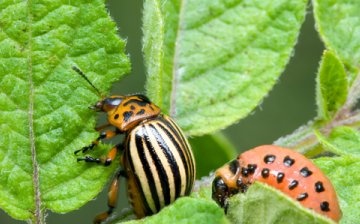
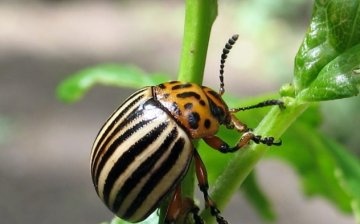
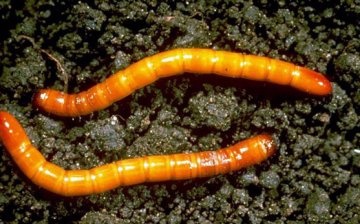


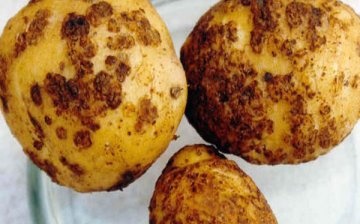







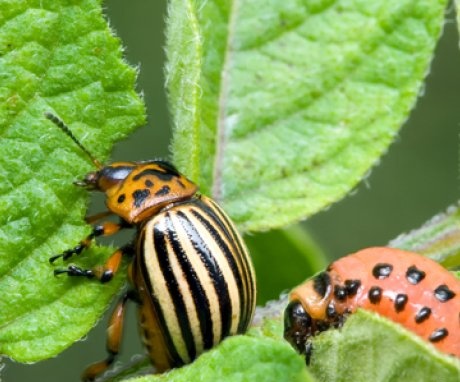


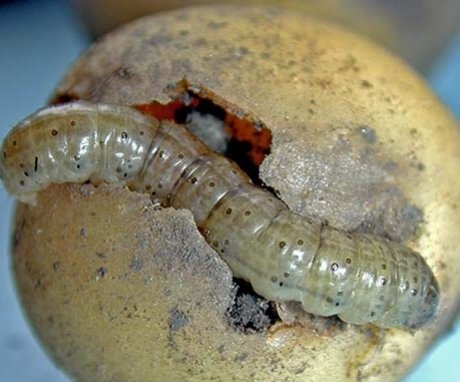
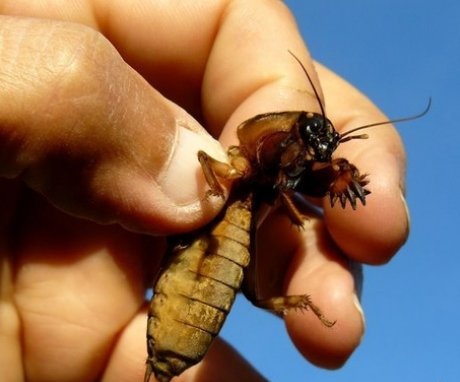
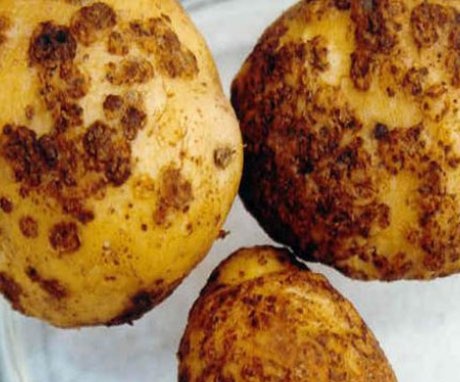
And we have not had the Colorado potato beetle for more than 8 years ...
The devil is not so terrible as he is painted!
Once upon a time, ten years ago (or even more), my wife and I were so tortured by the Colorado potato beetle that we stopped planting potatoes, and I began to figure out what kind of "beast" it was and how to deal with it. Internet searches have shown that all the recipes boil down to either scaring the beetle away, or destroying it physically or chemically. Finally, I managed to stumble upon an article by a biologist (unfortunately, I do not remember his name), which said that the favorite food of the Colorado potato beetle is the plants of fragrant tobacco, which are poisonous to him. This seemed interesting, and I began to bully all the Moscow seed merchants with the question: "Why is there no fragrant tobacco?" Two years later, scented tobacco went on sale. Unfortunately, these were seeds of the Dutch selection - multi-colored, but with a faint smell. We raised seedlings and planted them at the same time as planting potatoes. The result exceeded all expectations. Since then, we have forgotten about the Colorado potato beetle. More than 8 years of life without the Colorado potato beetle and the feedback from those who followed our example allow us to try to give advice on the use of scented tobacco. First of all, be patient, as the whole process will take about three years. The land does not like vanity.
Now, in order:
1. It is necessary to sow fragrant tobacco on seedlings one and a half to two months before planting potatoes, so that by the time of planting in the ground, it has time to gain a height of 15 - 25 cm. Sowing it into the ground simultaneously with planting potatoes leads to the fact that the seedlings are completely eaten by the first beetles and nothing remains on the rest (from the reviews). Our only self-sown plant of fragrant tobacco appeared only in 2015, and in 2016 there are already quite a few. I think that it was the neighbor beetles who destroyed young tender sprouts first of all.
2. The onslaught of the Colorado potato beetle on the closest neighbors has significantly decreased over the years (and our areas are 24x37 meters), so I believe that the radius of the protection zone of one plant exceeds 10 meters, but this is not the first year when everyone will go to your fragrant tobacco nearby beetles.
3. Be mentally prepared for the following:
a) beetles from all over the area will gather on your fragrant tobacco (let them eat and die);
b) the larva of the Colorado potato beetle, which overwintered in the ground, is not very attractive with fragrant tobacco. For the first three years you will have to fight it yourself. The main thing is that new eggs will not be laid (according to one of the reviews, only larvae were sitting on the potatoes, and all the beetles gathered around fragrant tobacco).
In the first year, I advise to surround the potato plot with a "hedge" of fragrant tobacco in increments of 1 - 2 meters. Decide what to do next year based on local conditions. If you are late with the recommended planting dates for scented tobacco, you can plant it for the first time and later, just the first beetles will have time to lay eggs, but the effect will still be there next year. In the case of an extremely large number of beetles, when he can eat all the fragrant tobacco, you must be ready to plant a new batch.
The advantage of my method is very low labor intensity: "I planted and forgot". The beetle itself comes to the poison and eats it until it dies. The habit of the beetle to scented tobacco, in my opinion, is impossible. Starting from the third year, according to the calculation, 36 plants are enough to protect a square field of 1 hectare, 20 along the perimeter and 16 in potato rows with a step of 20 meters. Fragrant tobacco plant is unpretentious and should withstand hilling, however, this must be checked. The only difficulty is the first 1 - 2 years, when bugs from all over the area will collect on your scented tobacco. This must be experienced!
In conclusion, I will once again advise you to fight the Colorado potato beetle with scented tobacco, because this method is the best in terms of labor intensity, does not require the use of any chemicals and is completely harmless to all other living creatures that live in our gardens. Those who take my advice, I kindly ask you to send feedback to the email address
In recent years, we have not planted potatoes because of the Colorado potato beetle. Manual assembly is a laborious and ineffective process, and we also do not want to do constant chemical processing of potatoes.